Kaziranga ~ A wild jewel of Assam...
Kaziranga National Park is a UNESCO World Heritage Site that hosts the World's 2/3 population of Great One-Horned Rhinoceroses. This is one park with the success story of conserving the forests and almost bringing the Rhinos population close to 2000 from the brink of extinction in the park. The forest is a bio-diversity hotspot with the highest tiger density in India currently. But, the tall elephant grass, marshes and Beels (ponds) restrict the sighting of this majestic cats. The mighty Brahmaputra and other rivers criss-cross the park that gets flooded each year with substantial loss of animal life. The high lands within the park hosts the animals during the floods.
Few images below showcase the beauty of this Jewel of Assam...
Thanks to "The Safarist" that connects wildlife lovers to share the passion of traveling together.
Thanks to Mehul Patel, who floated the kaziranga trip, shared his knowledge and managed all the logistics to the dot.
The high number of birds we sighted and photographed were due to the immense knowledge of our best Naturalist in Kaziranga, Dhiren (Mobile:8134892476).
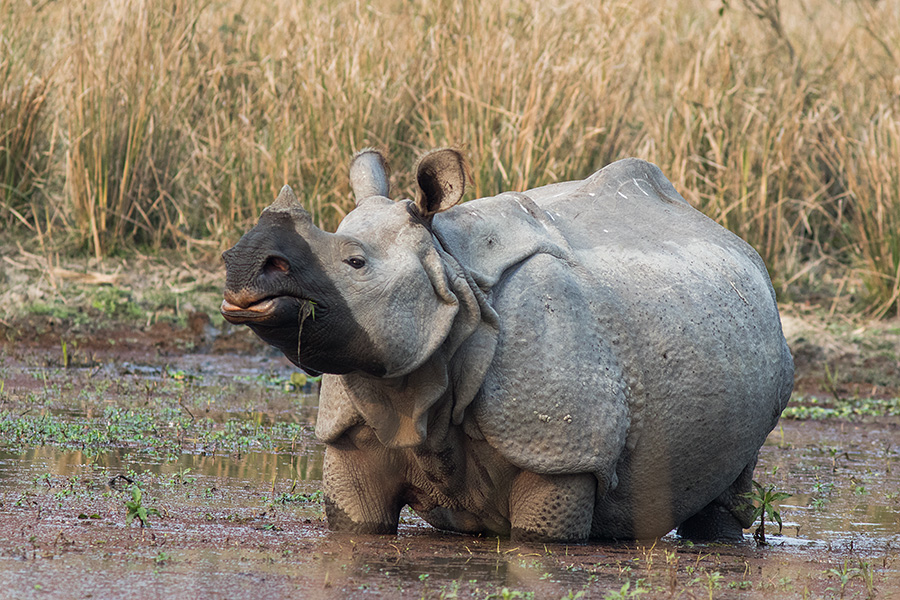
We made a quick pitstop at Pobitora Wildlife Sanctuary on the way to Kaziranga. The afternoon safari in this small sanctuary resulted in this beautiful rhino grazing in small pool of water.
Canon 7D, canon 300mm, 1.4 TC, F8, 1/250s, ISO 800, Ev +1/3
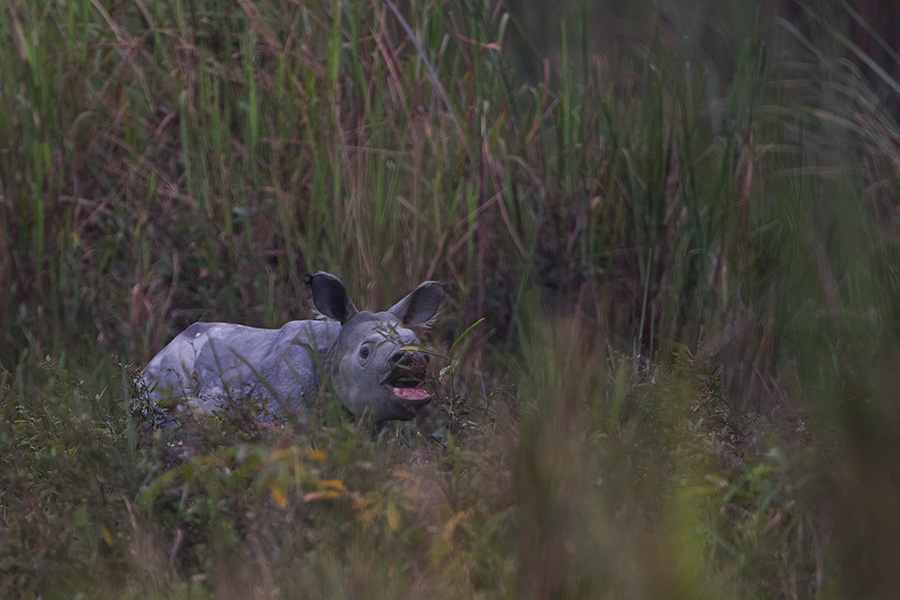
The Rhino calf is protected fiercely by the mother and always hidden in the tall grasses here. Was lucky to see one and photograph it before it disappeared within a moment.
Canon 7DM2, canon 500mm, 1.4 TC, F8, 1/160s, ISO 800, -1/3Ev.
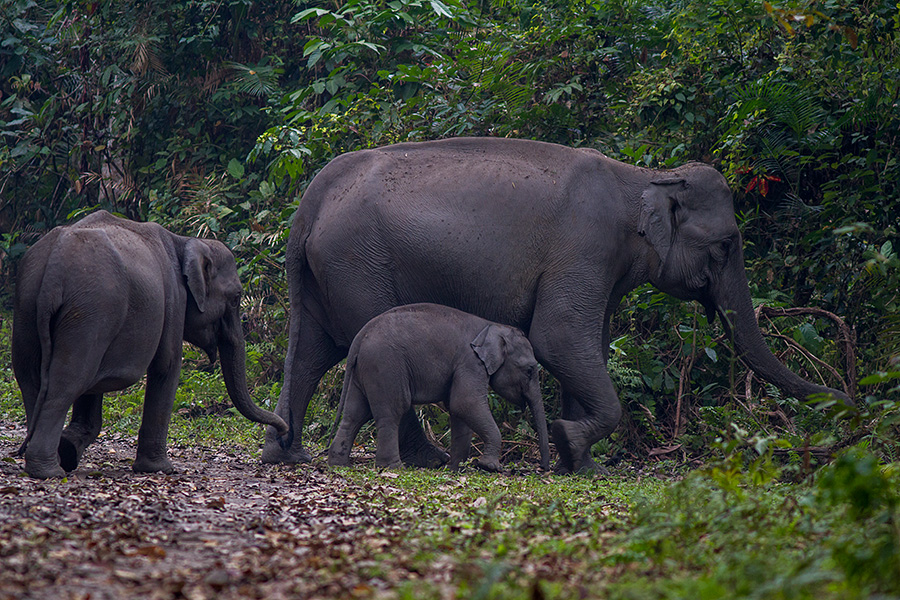
The elephant family crosses the road. The calf and young accompany the mother elephant.
Canon 7D, canon 300mm, F4, 1/125s, ISO 640
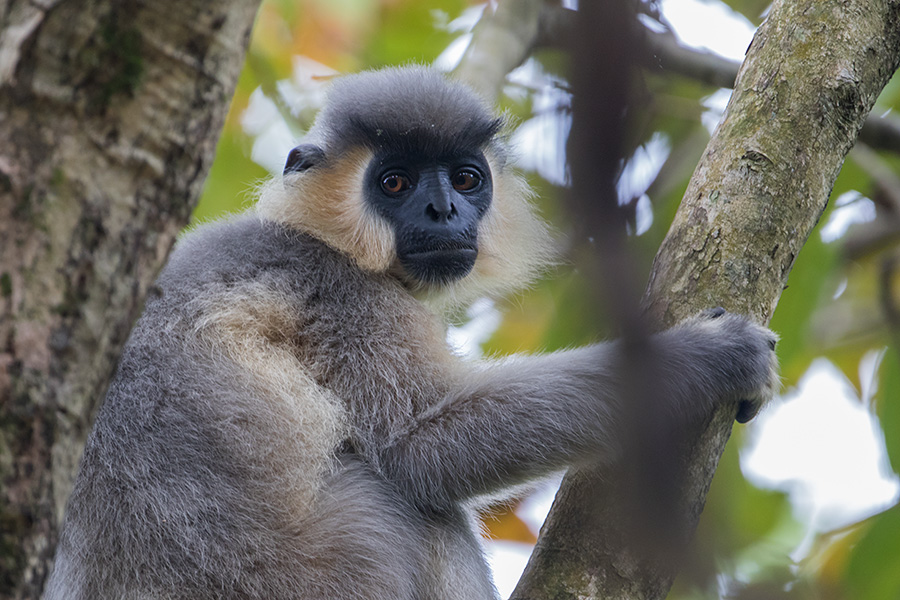
The capped langur (Trachypithecus pileatus) looks onto us. They are classified as Vulnerable due to the habitat loss.
Canon 7DM2, canon 500mm, 1.4 TC, F5.6, 1/40s, ISO 640, +1/3Ev.
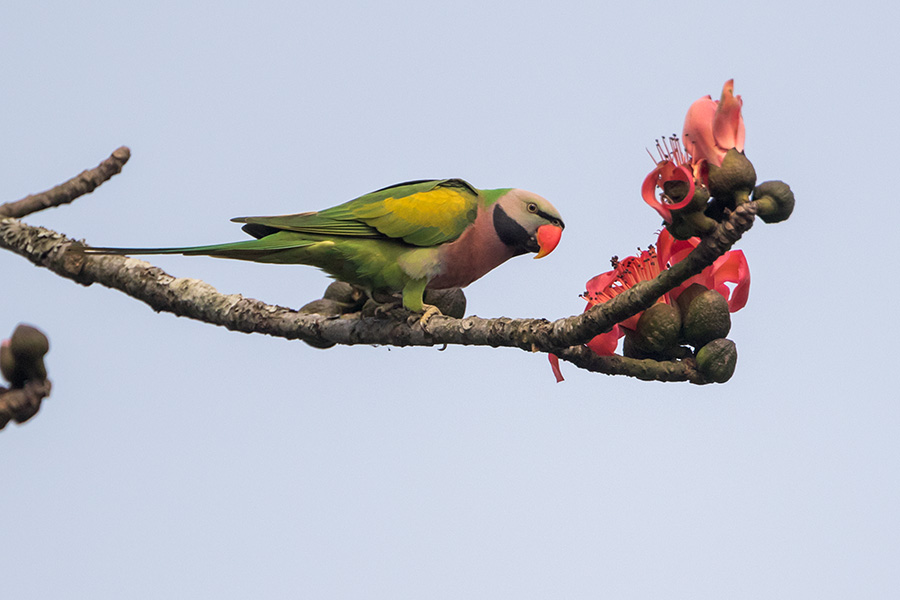
The red-breasted parakeet (Psittacula alexandri) male is feeding on the Cotton Tree flowers.
Canon 7DM2, canon 500mm, 1.4 TC, F5.6, 1/2500s, ISO 400, +1/3Ev.
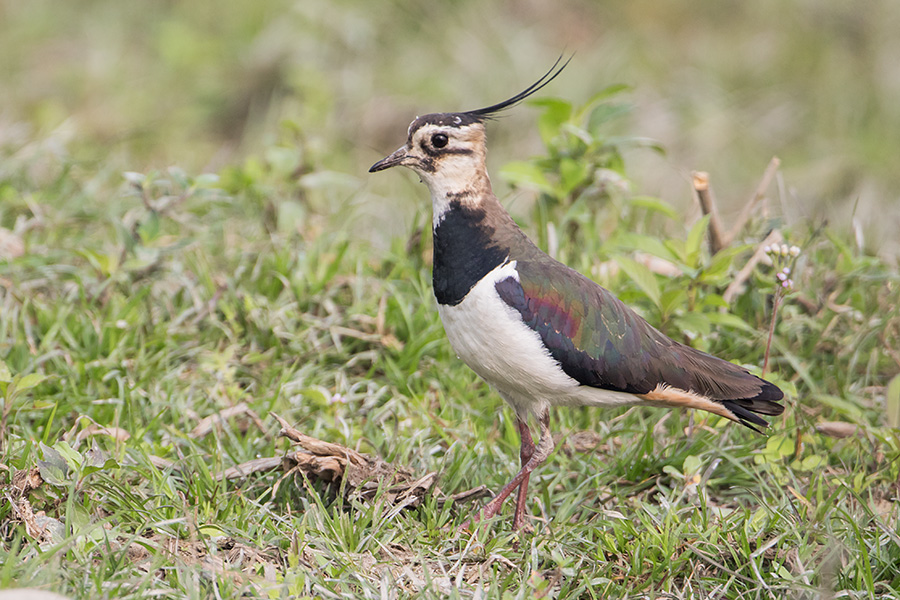
The northern lapwing (Vanellus vanellus) feeding by the lakeside.
Canon 7DM2, canon 500mm, 1.4 TC, F5.6, 1/640s, ISO 400, +1/3Ev
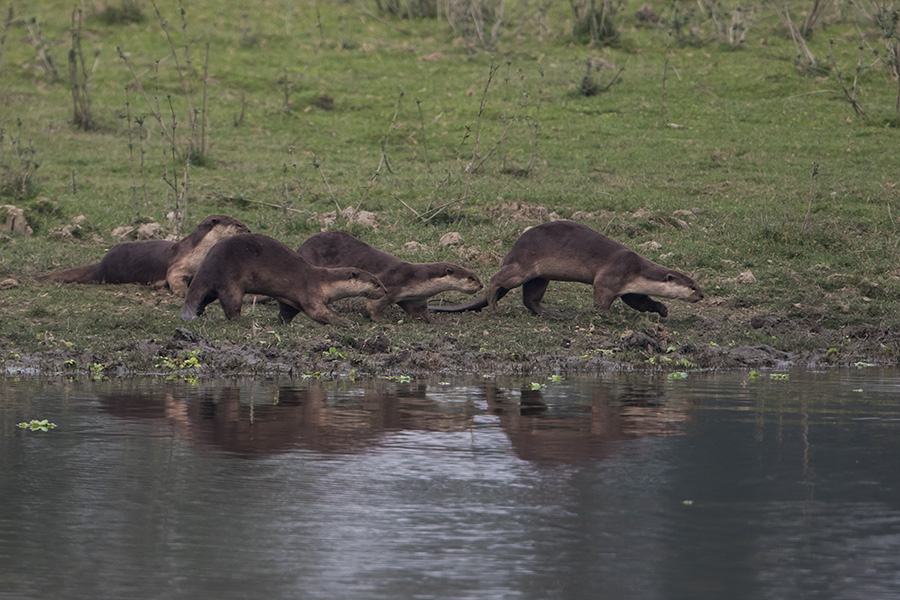
Eurasian Otter (Lutra lutra) group heading towards the water after a brief cleaning and resting session on the banks.
Canon 7DM2, canon 500mm, 1.4 TC, F5.6, 1/1250s, ISO 400.
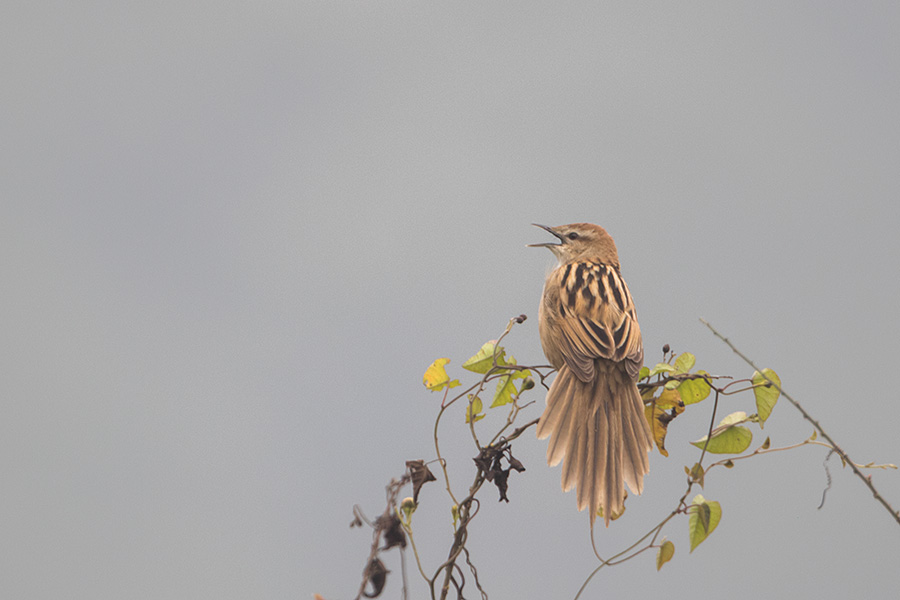
The striated grassbird (Megalurus palustris) calling in the cloudy morning.
Canon 7DM2, canon 500mm, 1.4 TC, F5.6, 1/320s, ISO 640, +1 Ev.
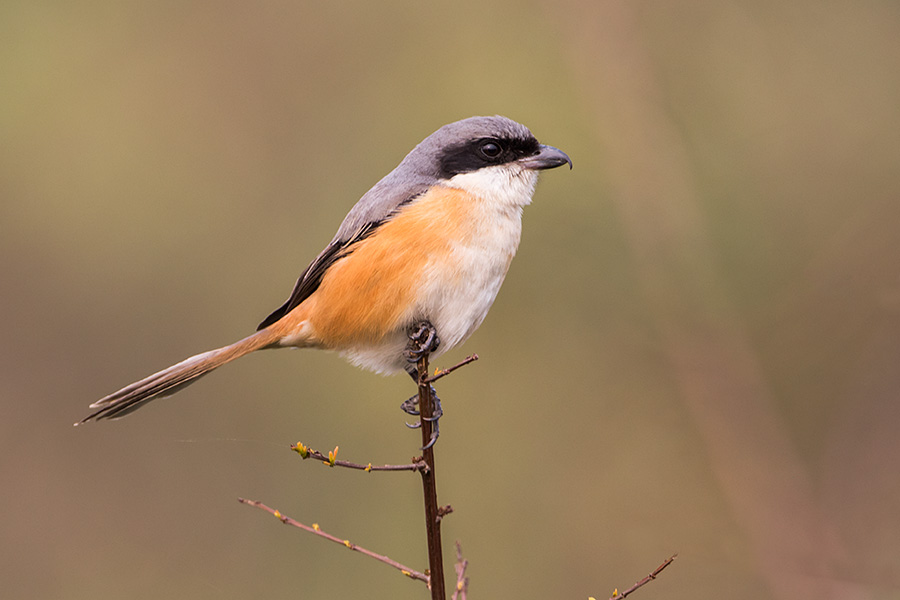
The grey-backed shrike (Lanius tephronotus) seen quite easily around the grasslands and villages.
Canon 7DM2, canon 500mm, 1.4 TC, F8, 1/200s, ISO 320
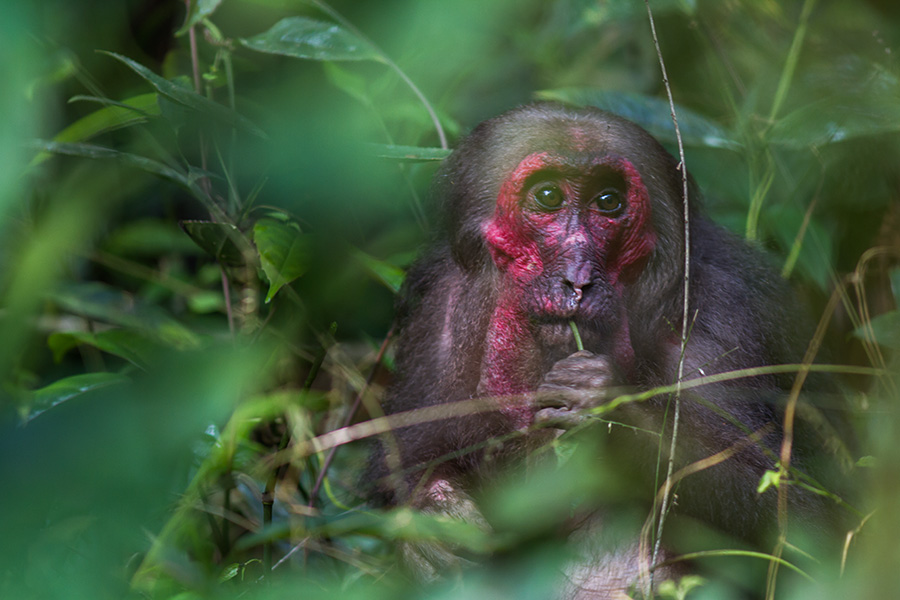
The stump-tailed macaque (Macaca arctoides) group was encountered on our one day excursion to Hollangapar Gibbon sanctuary. These are also vulnerable species due to the habitat loss. There was a small group busy feeding in the thick vegetation below and constantly on the move.
Canon 7D, canon 300mm, F4, 1/200s, ISO 320, -1/3Ev
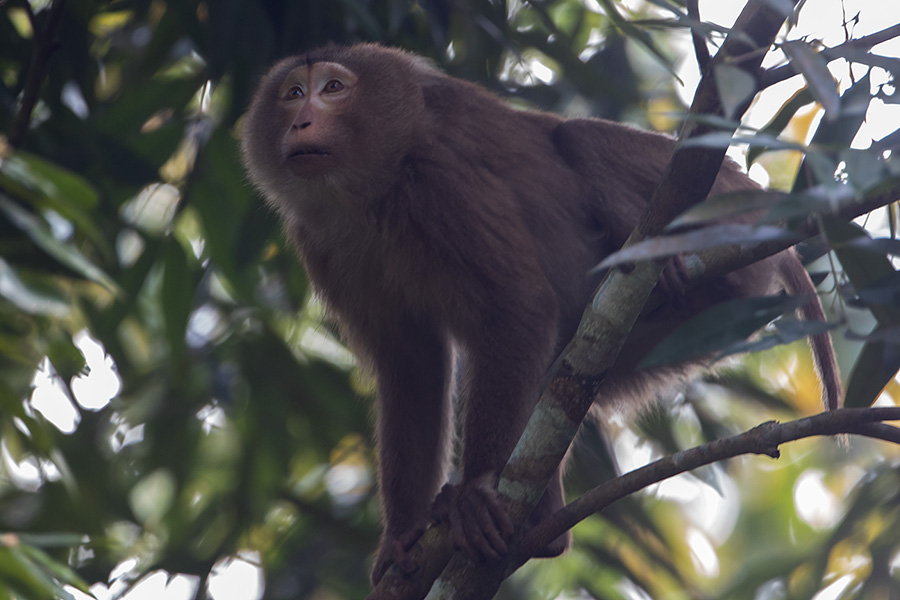
The northern pig-tailed macaque (Macaca leonina) is another Vulnerable primate we encountered in Hollangapar Gibbon Sanctuary. They were seen feeding along with Stump tailed macaque and also a pair seen moving around with Gibbons later.
Canon 7DM2, canon 500mm, 1.4 TC, F6.3, 1/20s, ISO 640, 2/3 Ev, Tripod.
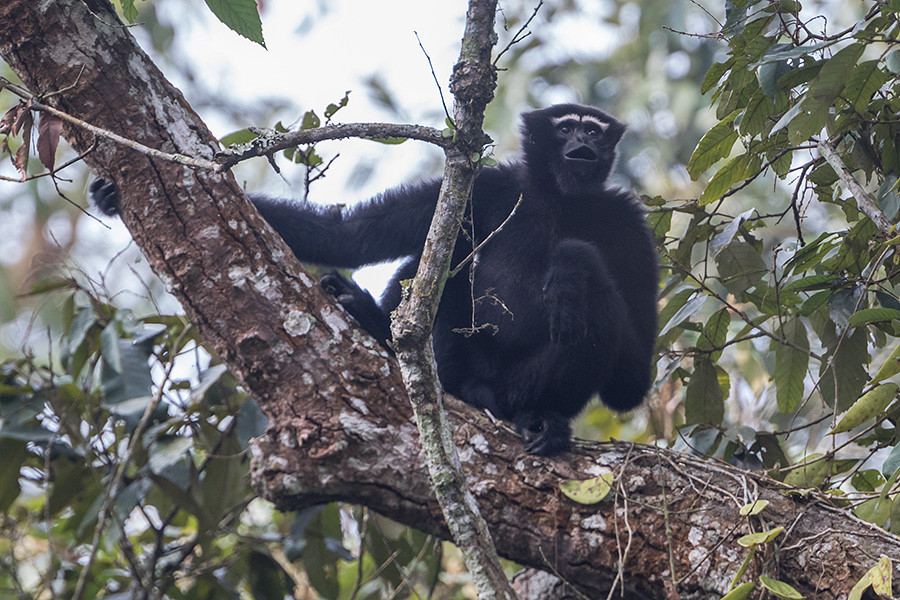
The western hoolock gibbon (Hoolock hoolock) Male - It is the only Ape found in India. We found a canopy dwelling family that graciously spent some time with us before moving further inside the forest. They are critically endangered species and threatened by the habitat loss and human encroachment.
Canon 7DM2, canon 500mm, 1.4 TC, F5/6, 1/400s, ISO 640, +1/3 Ev, Tripod.
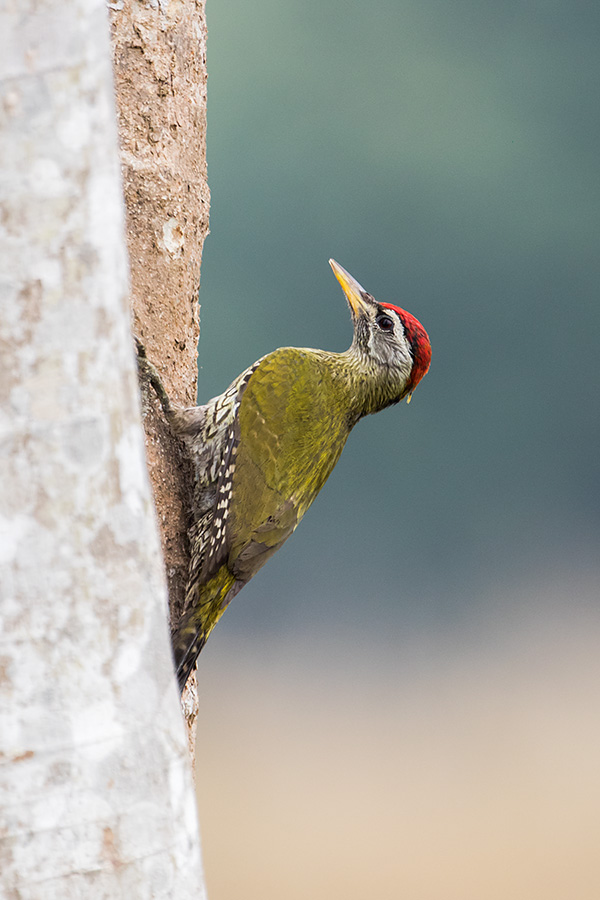
The scaly-bellied woodpecker (Picus squamatus) seen pecking on the woods in a beautiful settings.
Canon 7DM2, canon 500mm, 1.4 TC, F5.6, 1/500s, ISO 640, +1Ev.
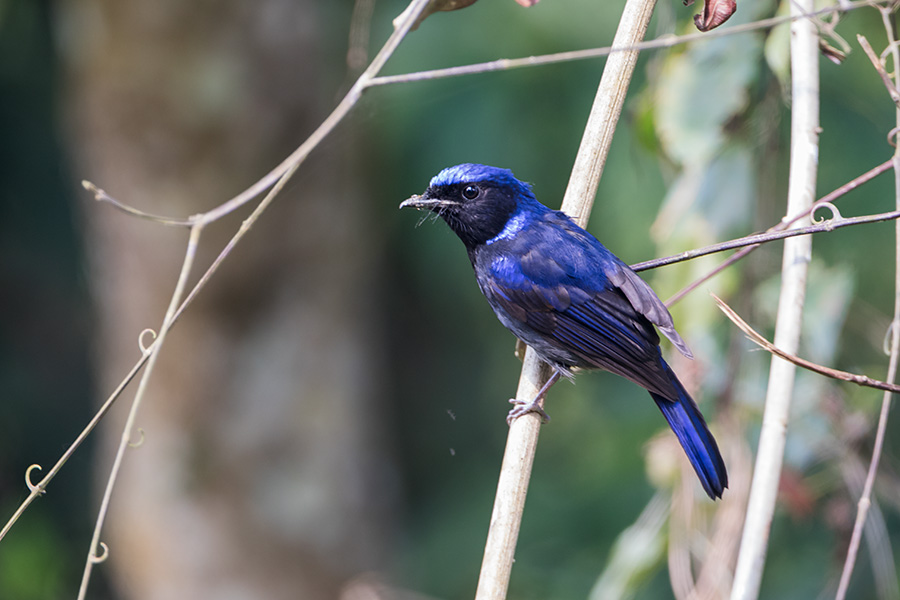
The large niltava (Niltava grandis) and small Niltava were seen around the bushes catching the insects and moving around swiftly. Just a little patience and they would come out in open for few moments.
Canon 7DM2, canon 500mm, 1.4 TC, F5.6, 1/100s, ISO 400, +2/3Ev.

The Asian barred owlet (Glaucidium cuculoides) seen around easily. But, this guy was quite bold and giving poses, so have to share its cuteness.
Canon 7DM2, canon 500mm, 1.4 TC, F5.6, 1/250s, ISO 320, 1/3Ev, Tripod.
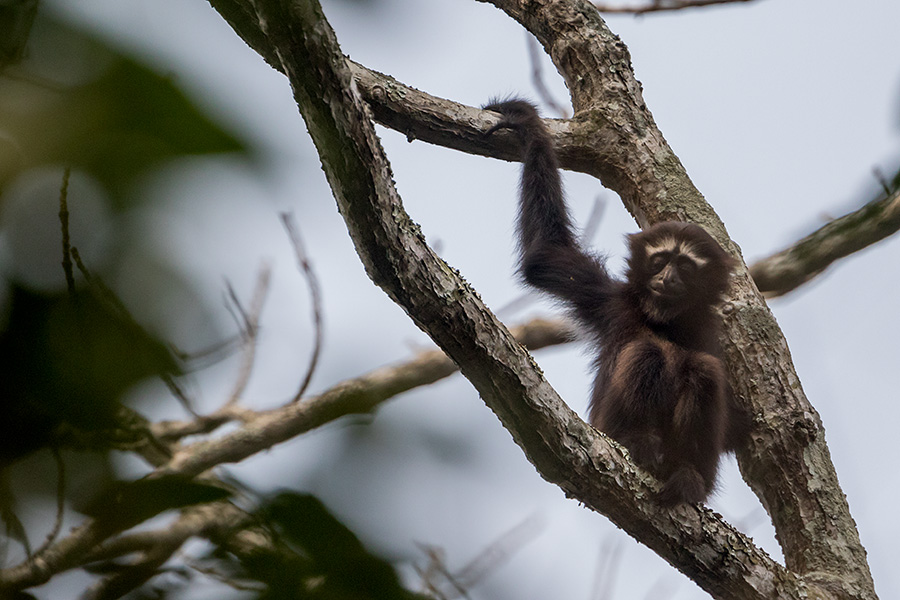
The western hoolock gibbon (Hoolock hoolock) baby was seen laughing in its meditating pose after jumping over its parents and having fun around.
Canon 7DM2, canon 500mm, 1.4 TC, F5.6, 1/2000s, ISO 640, 1/3Ev, Tripod.
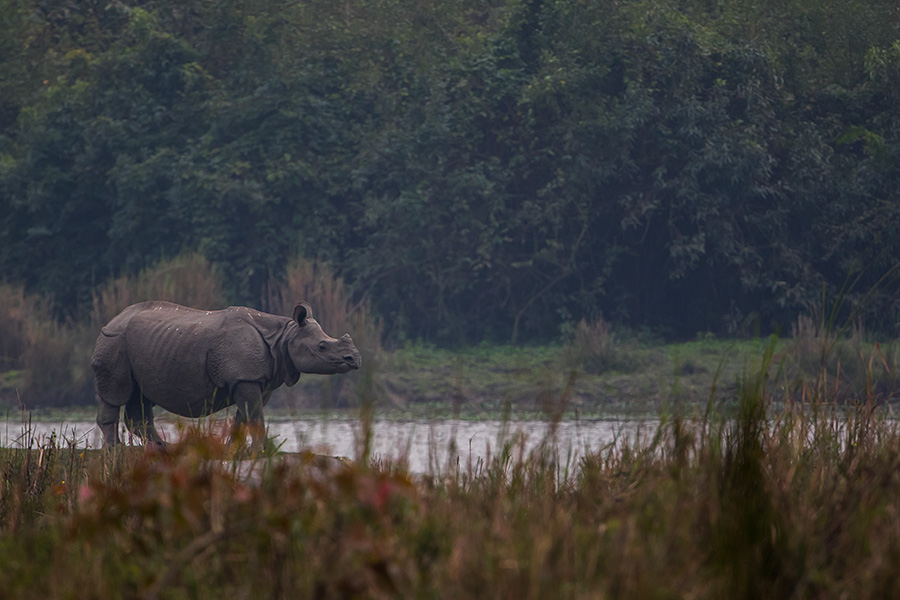
The elephant grass, the Beel (small lake), medows and One Horned Rhino busy grazing is a typical Kaziranga Landscape.
Canon 7DM2, canon 500mm, 1.4 TC, F5.6, 1/800s, ISO 800, -1/3Ev
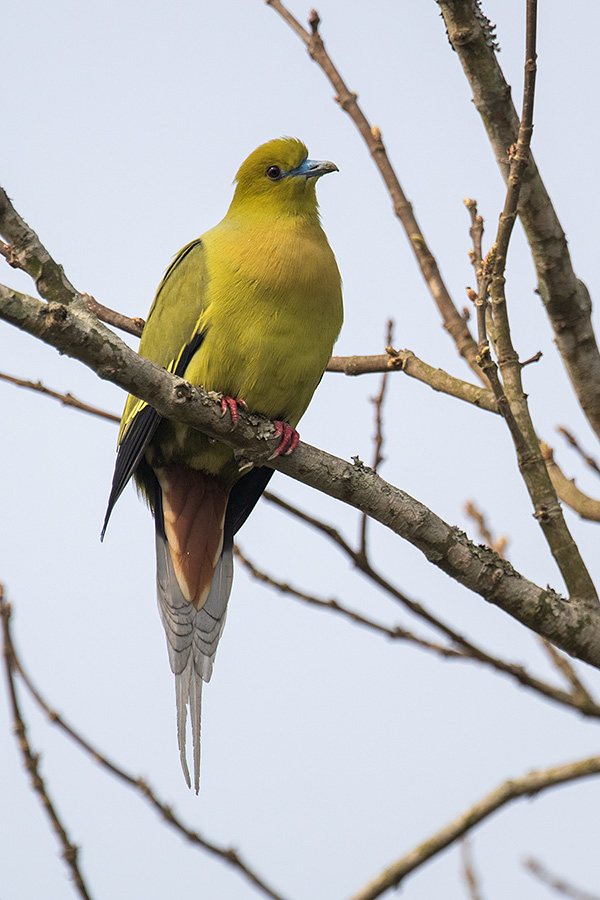
The pin-tailed green pigeon (Treron apicauda) male seen alone at the entrance as soon as we entered for our afternoon safari. If not for our expert naturalist to point it out, we would have overlooked it and moved ahead.
Canon 7DM2, canon 500mm, 1.4 TC, F5.6, 1/1250s, ISO 400, 2/3Ev, Tripod.
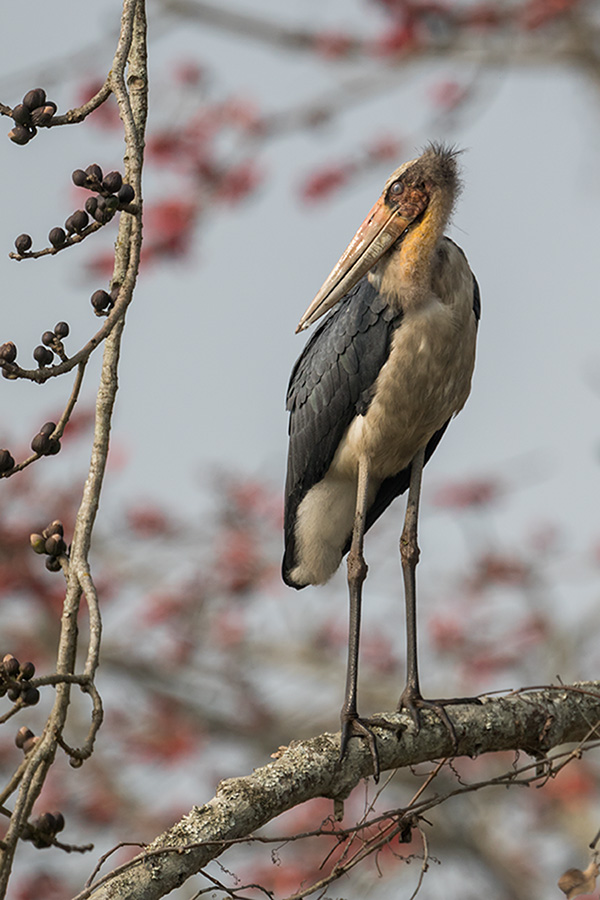
The lesser adjutant (Leptoptilos javanicus) is another Vulnerable Species found here commonly around the wetlands. Seen here resting the on the flowering Cotton Tree.
Canon 7DM2, canon 500mm, 1.4 TC, F5.6, 1/1000s, ISO 320
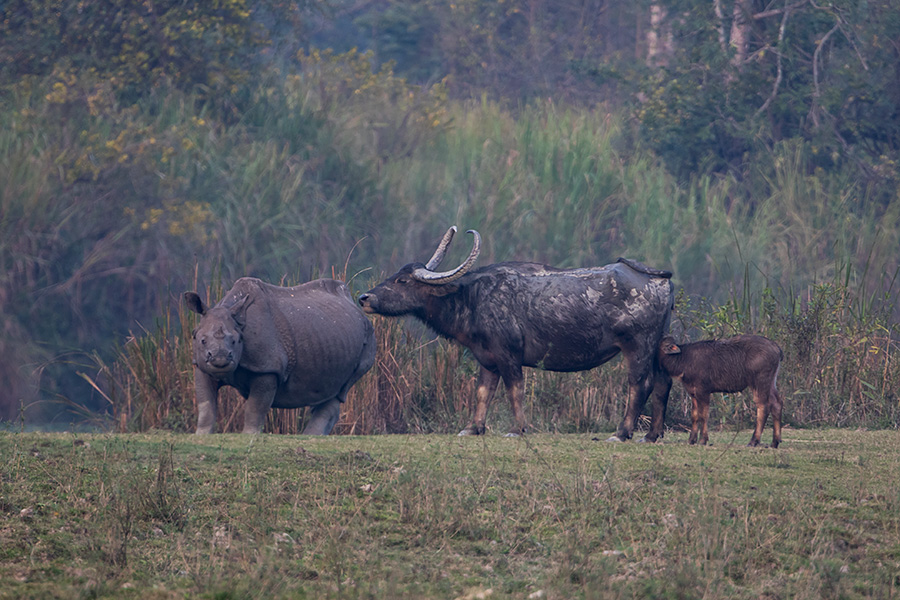
The wild water buffalo (Bubalus arnee), another critically endangered species shares this habitat with Rhino here. And, it is a treat to watch them together grazing around and going about their own business without much conflicts.
Canon 7DM2, canon 500mm, 1.4 TC, F5.6, 1/250s, ISO 320, 1/3Ev, Tripod.
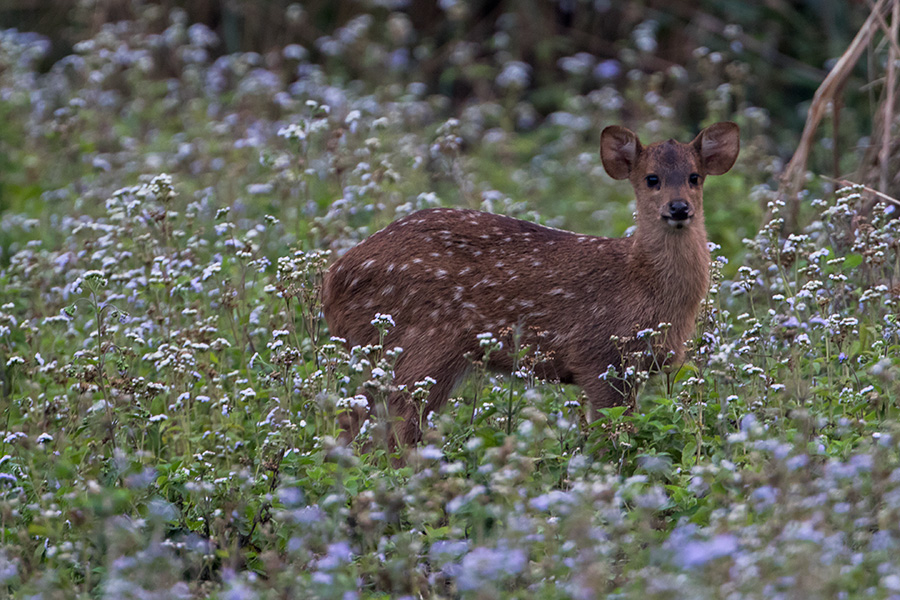
The Indian hog deer (Hyelaphus porcinus) calf was seen among with these beautiful flowers. They hung around with their herds and are also a critically endangered species and important prey base for predators like Tiger.
Canon 7DM2, canon 500mm, 1.4 TC, F5.6, 1/250s, ISO 320, 1/3Ev, Tripod.
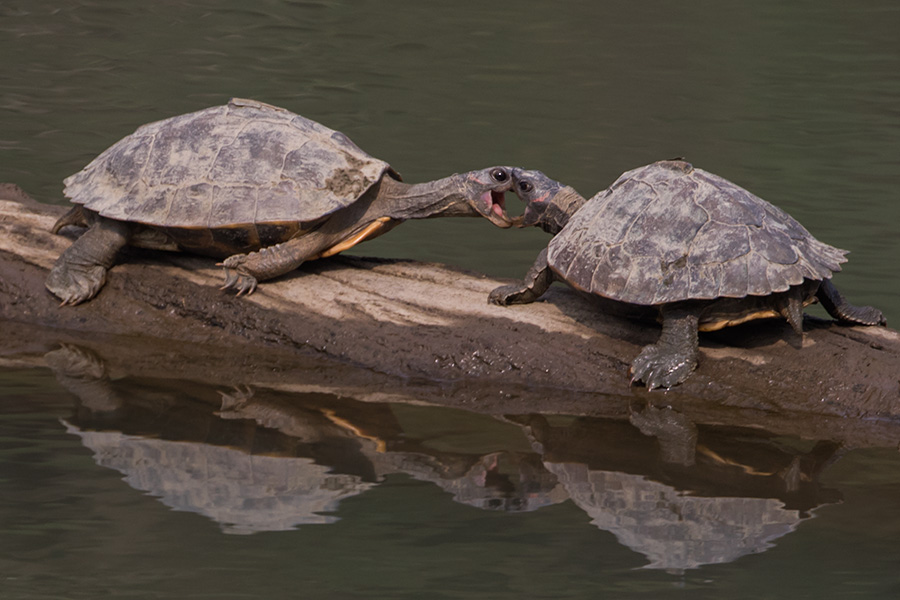
The Assam roofed turtle (Pangshura sylhetensis) comes out on these wood logs for sunbathing. But, the competition for this small place is too much and there are frequent skirmishes to push each other down that one can see here.
Canon 7DM2, canon 500mm, 1.4 TC, F8, 1/500s, ISO 320, -1Ev
Do not forget to write about how you liked them below. Thanks for the time spent here.



